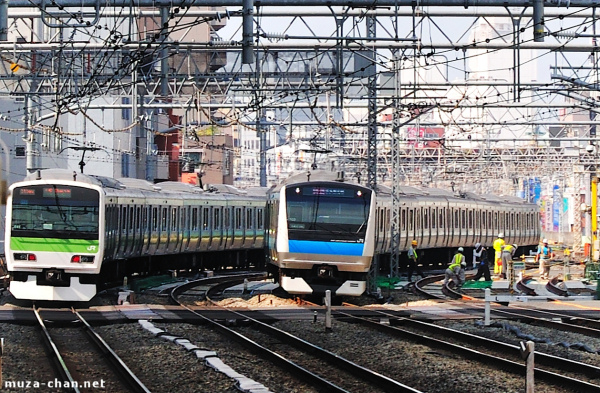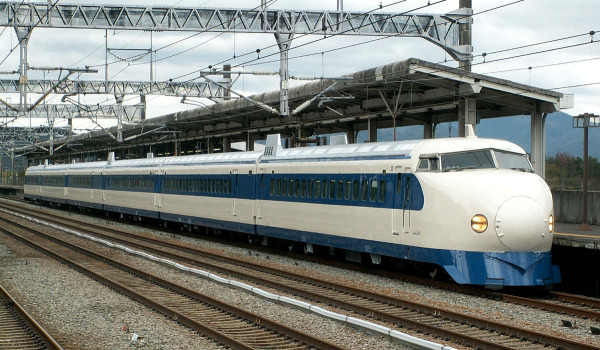Anyone who experienced the Japanese trains has a story to tell… There are hundreds of stories about the punctuality, the speed or the cleanness of the Japanese trains. Nevertheless, what makes the Japanese trains so different? Of course, there’s no simple answer… but I’ll present you with some facts that may give an over-all picture…
 Yamanote (green) & Keihin-Tohoku (blue) commuter trains near Akihabara Station
Yamanote (green) & Keihin-Tohoku (blue) commuter trains near Akihabara Station1. The Cooperation between Japanese Train Manufacturers
Let’s start with the beginning, the factories. What can be different about them? The technology involved? Maybe, but not only…
Taking into account just the high-speed trains, while the lead manufacturers from the rest of the world are competing with each other, researching and developing their own products (e.g. Alstom with the TGV, Siemens with the ICE ), in Japan the train manufacturers have been closely cooperating ever since the first Shinkansen was produced, in 1964.
The first Shinkansen (0 Series) was produced by a group of 6 different manufacturers (Nippon Sharyo, Kawasaki Sharyo, Kinki Sharyo, Kisha, Hitachi and Tokyu Car Corporation) some of them competitors on the same market.
This cooperation led to many advantages but most significant is the fact that the Japanese trains are by far the most reliable trains in the world. In 2007, compared to the reliability of the French TGV trains, the Shinkansen trains scored 60 times better…
Oricine a avut ocazia să meargă cu trenurile japoneze are o poveste de spus… Sunt sute de relatări despre punctualitatea, viteza sau curăţenia trenurilor din Japonia. Dar totuşi, care sunt motivele pentru care trenurile japoneze sunt atât de diferite? Bineînţeles că nu se poate da un singur răspuns… dar vă voi prezenta o serie de fapte care pot da o imagine generală…
 Trenuri Yamanote (verde) şi Keihin-Tohoku (albastru) lângă staţia Akihabara
Trenuri Yamanote (verde) şi Keihin-Tohoku (albastru) lângă staţia Akihabara1. Cooperarea dintre producătorii japonezi de trenuri
Să o luăm cu începutul, cu fabricile. Ce poate fi diferit la ele? Tehnologia? Poate, dar nu numai asta…
Vorbind numai despre trenurile de mare viteză, în timp ce producătorii de trenuri rapide din restul lumii sunt în permanentă competiţie, cercetând şi dezvoltând propriile produse (ex. Alstom cu TGV, Siemens cu ICE ), în Japonia producătorii de trenuri au cooperat strâns încă din 1964, când s-a produs primul Shinkansen.
Primul Shinkansen a fost produs de un grup format din 6 producători (Nippon Sharyo, Kawasaki Sharyo, Kinki Sharyo, Kisha, Hitachi şi Tokyu Car Corporation), unii dintre ei competitori pe aceeaşi piaţă.
Read more



